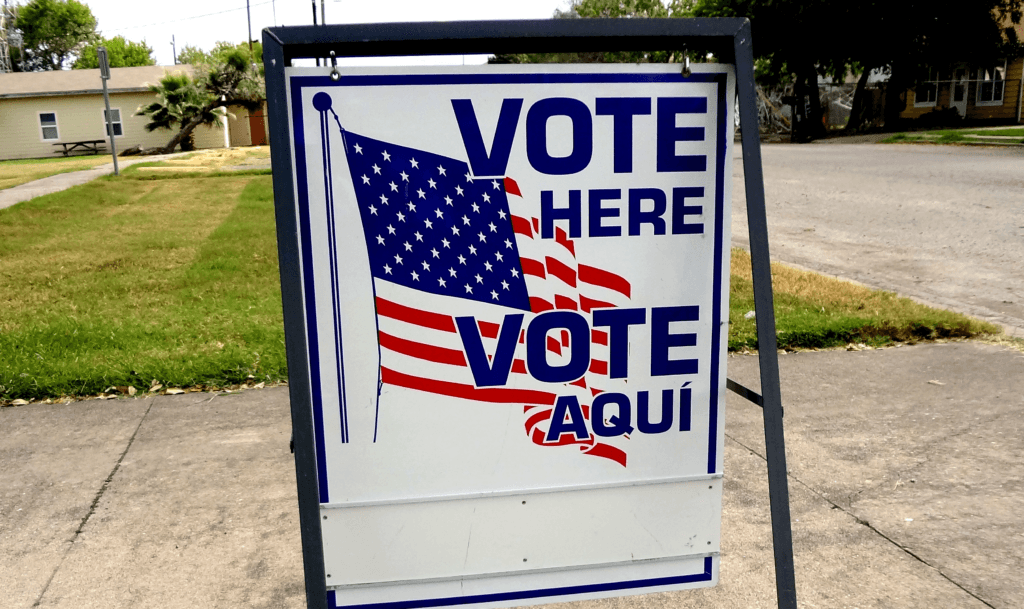
Inconvenient data: voter apathy and its cost in carbon
The second installment in a three-part companion series to An Inconvenient Sequel. How much does voting matter? Our experts estimate the carbon output of Trump versus Clinton.
Imagine you’re the perfect green consumer. You bike to the grocery store and pedal organic, locally-grown vegetarian meals to your tiny home in reusable bags. You’re feeling pretty good about your ecological footprint.
But are you doing enough as a citizen to influence important policy decisions? In the 2014 midterm elections, only 17 percent of Americans aged 18-24—fewer than one in five—voted.
You’ve heard the rationalizations for staying home on Election Day. Why vote when the options seem so alike? And even when a candidate excites you, doesn’t the inertia of a massive government beholden to special interests negate the difference one elected official can make?
You and your tribe of like-minded greenies have made a lifelong commitment to emission-reducing behavior. That’s got to matter more than intermittent voting in a dysfunctional political system, right?
To quote our current president’s tweets: “WRONG.”
As a collective action, voting can be vastly more powerful than choosing tofu over beef or biking instead of driving.
Skeptical? Good. You should be—it is important to question assumptions. Let’s walk through this concept together, by way of re-visiting the most recent national election and contrasting expected greenhouse gas emissions under President Donald Trump with what could have been under former Secretary of State Hillary Clinton.
To keep things simple, we’ll calculate the emissions consequences of just two environmental policy differences between Trump and Clinton: 1) commitment to the Paris Climate Agreement, in which the United States pledged to reduce emissions to 25-28 percent below 2005 levels by 2025, and 2) enforcement of former President Barack Obama’s Clean Power Plan. Hillary supported both; Trump supports neither.
The differences between the candidates wouldn’t be tangible the day after the election. There are inevitable time lags. Renewable power infrastructure takes time to build. Coal plants take time to be decommissioned. So, let’s consider the impact of Hillary versus Donald in the year 2025. That is the length of time it takes a child to go from first grade to high school.
Under a Clinton trajectory, the U.S. would be on track to emit 4.5 billon metric tons of CO2 in 2025. Under a Trump trajectory, the U.S. would be on track to emit 5.3 billion metric tons of CO2 in 2025. This differential is 800 million metric tons of CO2, or the equivalent of 84 million homes’ energy use for a year. That is approximately the populations of New York, Texas, and California combined. In other words, if just a few more young people in key states had stepped up and voted, they could have had 84 million times the impact that even the very greenest of the green does through their individual consumer decisions.
This 800 million tons of CO2 does not take into account Trump’s proposals to open federal lands to fossil fuel exploration, his support of coal subsidies, the innovations never made because of cuts to research funds, the policy decisions made by his climate-change-denying head of the Environmental Protection Agency—nor any other unpredictable policy decisions he may make during his term. The real emissions costs are certain to be much higher.
We aren’t suggesting you give up your green lifestyle. Cultural change matters, and in many cases the “green” option is also likely to make you healthier and happier. But the challenge of climate change is so enormous we must attack it on multiple fronts. That means supporting smart and green public policies, which can only happen through political action and voting.
Our atmosphere is a “public good”—no one owns the air. Protecting the atmosphere from CO2 pollution and climate disruption is the legitimate domain of government according to almost any political philosophy. What differ are the measures one might choose to secure that protection.
Like all midterm elections, the 2018 midterm elections will lack the wall-to-wall, 24-hour coverage of a presidential contest, and will by comparison seem less important. But November 2018 is our next big chance to shift the climate trajectory to which we’re committing the Earth.
By all means, become a vegetarian or invest in solar panels for your home. But understand that your lifestyle choice will be largely in vain if the 2018 midterm elections draw as few participants as the 2014 midterms and Congress remains supportive of Trump’s climate agenda.
Your vote matters to our future on this planet. Use it. And if you can, get involved in a local or statewide political campaign. Register your friends to vote. It may be the greenest thing you ever do.
Note: The opinions expressed here are of the authors and not their employers.






